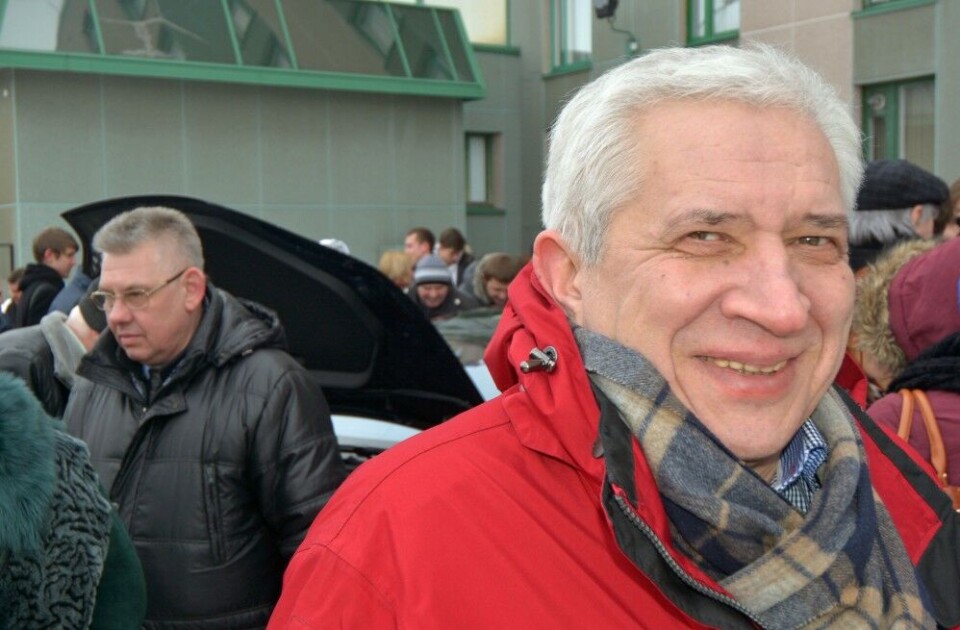
Russia mulls underwater nuclear reactors for Arctic oil
Design institute assures the small reactor meets IAEA’s safety standards.
How to power a subsea-drilling complex in ice-covered waters? The Rubin Design Bureau in St. Petersburg believes it got the answer.
“For an underwater energy complex, we can create an installation using a reactor that meets today’s IAEA technical and scientific requirements,” says Eugene Toropov, Chief Designer with the Rubin Central Design Bureau for Marine Engineering to Interfax.
Being Russia’s largest design centre for nuclear submarines, Rubin has a credible understanding of what it takes to put such a reactor complex into operation. Two-thirds of all nuclear submarines in Soviet/Russian naval history, including the giant Typhoon-class, are designed by the bureau.
Rubin has experience in design for Arctic oil and gas installations, including rebuilding the Prirazlomnoye platform today operating in the eastern part of the Barents Sea.
The Arctic shelf reactor project envisages the creation of a module ensuring a fully autonomous underwater complex for extraction of hydrocarbon deposits in Arctic seas with heavy ice conditions. That includes drilling, subsea transport and service complex.
Nearly 20 times smaller than Kola NPP reactor
The reactor in question will be 24 MW. In comparison, each of the two reactors on board Russia’s nuclear-powered icebreakers is 171 MW. The reactor powering the Navy’s Akula-class submarine is 190 MW and each of the four reactors at Kola nuclear-power plant is 440 MW.
A 3D modelling study is already completed. Eugene Toropov says both an approval from the Russian Government and an implementation plan from interesting companies can come “very soon.”
The new underwater reactor will have a 200,000 hours lifespan (23 years years) and will be able operate without human maintenance for 8,000 hours (one year).
The project is supported by the Ministry of Defence, Rosatom, Gazprom and United Shipbuilding Corporation. Rubin’s Chief Designer says a pilot project will be developed in cooperation with the Ministry of Economic Development and included in the framework of Russia’s economic development plant for the Arctic from 2025 and beyond.
Nuclear expert doubtful
Andrey Zolotkov, nuclear expert with the Bellona group says the idea doesn’t exactly take into account the economic situation in the market.
«Hydrocarbons are to cheap to start large-scale developments in the Arctic. Subsea nuclear installations will only rise the costs of Arctic oil and gas,» Zolotkov says to the Barents Observer.
He explains that Rubin’s idea was created in Soviet times, and it depends on state funding, where all economic losses can be written off. Andrey Zolotkov has been working as an engineer on board one of the service vessels storing spent nuclear fuel from the Murmansk based fleet of civilian nuclear powered icebreakers.

«I think it is doubtful that such nuclear reactors could operate on the seabed without humans presence. There are no experience of such reactors with such capacity operating autonomous,» Zolotkov argues.
«Maybe these ideas will be implemented, but not in the next few years. Ambitions of Rosatom [Russia’s state nuclear corporation] is not the most important area where Russia today should spend hundreds of billions of rubles from the State Budget.»
Andrey Zolotkov is also wondering about the risk assessments. “I haven’t seen any,” he says.
Underwater nuclear reactors for Arctic waters is not a new idea. Gazprom presented the idea first time when planning how to develop infrastructure for the giant Shtokman natural gas field in the Barents Sea a decade ago.
In France, the industrial group DCNS presented a plan on how to deploy small offshore nuclear power plants. Placed on the seabed several kilometres from shore, a city or an industrial site could connect via underwater power-cables World Nuclear News reported in 2011.
Floating nuclear power plant
Russia is currently building its first floating nuclear power plant, the “Akademik Lomonosov” holding two 64 MW reactors. The power plant is expected to be ready by 2019. Then, it will be towed from the yard in St. Petersburg, through the Baltics and North Sea and further north on its way to the Arctic town of Pevek in on the Chukotka Peninsula.
















